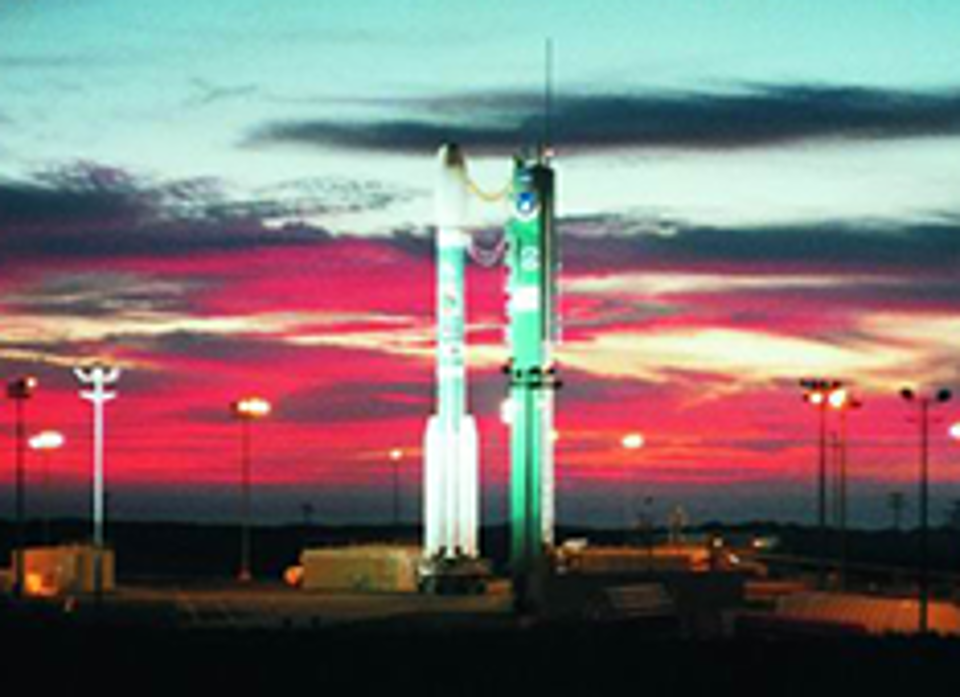2019-02-22
ØRSTED - 20 YEARS IN SPACE
The Ørsted satellite was launched 20 years ago from Vandenberg, California.

On Saturday, 23 February at 11:29:55 CET, it is exactly 20 years ago that Denmark’s first satellite Ørsted was launched on a Delta II launcher from Vandenberg Air Force Base in California with the aim of measuring the Earth’s magnetic fields.

Artist's impression of Ørsted
During the months before launch, the satellite became extremely well known because launch after launch were cancelled. It took 11 attempts before what later became a huge scientific and business success was launched.
Ørsted has been very important for Terma in terms of PR and technology. Several of the technologies we use today within the onboard space segment as well as the Earth segment were kick-started by Ørsted, e.g. power technologies, development of critical software, sensors, and computers. Within the Earth segment, this includes mission control systems, satellite check-out systems, and test systems.
These technologies have been further refined and developed over the years, but they were formed during the design of Ørsted. And it was the contributions to the Ørsted program that to some extent positioned Terma as a reliable and serious space company, culminating so far with the overall project management and technical responsibility for ESA’s ASIM mission onboard the International Space Station.
Industrially speaking, the Ørsted satellite was a Terma project when it was finally launched in February 1999. However, at the very beginning this was not the case as both Per Udsen Co. and CRI were independent companies at the time. Per Udsen Co. constructed the eight-meter long boom on which the measuring instruments were mounted, and CRI developed the software and had the overall project management responsibility. Terma developed computers and electronics. Later, both CRI and Per Udsen Co. became a part of Terma.

Work on the Ørsted boom in Terma
With a minimum lifespan of 14 months in service, the 61 kg satellite was tasked to provide measurements of the Earth’s magnetic field and other scientific observations. For years, data were collected at the Ørsted control center at Terma’s premises in Herlev and forwarded to the Danish Meteorological Institute and later to DTU Space. As the Earth station is no longer in operation, this has now come to an end. And the connection to satellite was cut in 2015, but it might very well still orbit the Earth at a distance of 650 - 850 km.
In 2002, Ørsted was the cover story on the scientific magazine Nature. According to scientists, data from the satellite indicated that the Earth’s magnetic poles were about to reverse, a theory that was supported by other measurements. Further, data from Ørsted showed that the magnetic North Pole in 2002 was located north of Canada and that it moves up to 50 km pr. year. It was estimated that the magnetic North Pole in 2050 might be positioned in Siberia. The impact of this position could be more northern light and heavy space storms in Europe.
In February 2010, Ørsted was threatened by Space debris. Terma received a warning from NASA stating that a Russian satellite and Ørsted would pass each other within an estimated distance of 400-500 meters which is very little in this connection. Fortunately, Ørsted steered clear of the collision.

Who we are
Terma in Brief
The Denmark based high-tech Terma Group develops products and systems for defense and non-defense security applications; including command and control systems, radar systems, self-protection systems for aircraft, space technology, and aerostructures for the aircraft industry.
Learn more about us



